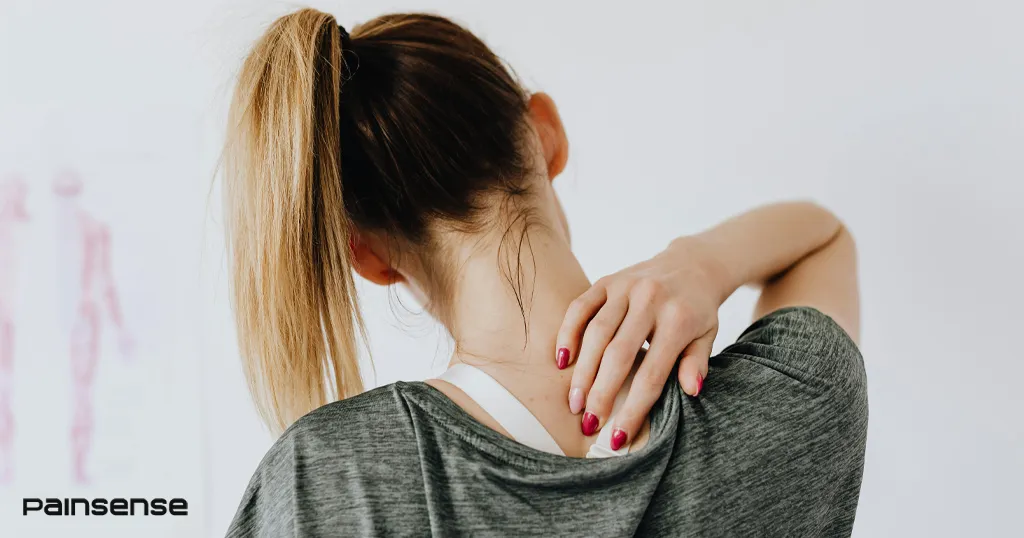Pain is one of the most common reasons people seek medical attention, yet it remains one of the most complex and subjective clinical challenges. While pain is universal, decades of research now confirm that it is not experienced in the same way by everyone. In particular, biological sex and gender roles influence how pain is perceived, reported, and treated, making this an important area of study for both science and healthcare (Bartley & Fillingim, 2013).
Historically, women were underrepresented in clinical pain research, which led to treatments and guidelines that often failed to reflect the differences between men and women. Today, evidence shows that women are more likely to experience chronic pain conditions such as fibromyalgia, migraines, and irritable bowel syndrome, while men may underreport pain or delay treatment due to cultural expectations of toughness. These disparities have significant consequences for diagnosis, treatment, and overall quality of life (PubMed: Sex Differences in Pain).
At PainSense, we believe that acknowledging and addressing these differences is essential for building more objective and equitable tools for pain assessment. By combining medical science with innovative technology, we aim to bring clarity to pain perception and improve patient care across populations.
Why Study Sex Differences in Pain?
Understanding pain is never simple, and when we add biological sex and gender into the equation, the picture becomes even more complex. But studying these differences is not just an academic exercise. It has real-life consequences for millions of patients worldwide.
Historical gaps in research
For decades, women were underrepresented in clinical trials. This meant that many pain treatments were tested primarily on men, even though women are more likely to suffer from chronic pain conditions (Bartley & Fillingim, 2013). The result? Care guidelines that didn’t fully reflect women’s experiences of pain.
Why it matters today
Women report higher rates of conditions like migraines, fibromyalgia, and irritable bowel syndrome.
Men, on the other hand, are often slower to seek care, sometimes underreporting pain due to cultural ideas of “toughness.”
These patterns shape how quickly pain is diagnosed, how it is treated, and even whether patients are believed in the first place.
The big picture
Studying sex differences in pain perception helps us:
Create more accurate diagnostic tools.
Develop personalized treatments that actually work for each patient.
Reduce bias in healthcare and improve equity.

Clinical Evidence of Sex Differences in Pain
When we look at real-world data, one thing is clear: men and women do not experience pain the same way. These differences appear in how often pain occurs, how strong it feels, and how patients talk about it.
Chronic Pain is More Common in Women
Large studies show that women are more likely to suffer from chronic pain conditions, including:
Migraines
Fibromyalgia
Irritable bowel syndrome (IBS)
This higher prevalence has been documented across cultures and age groups (Bartley & Fillingim, 2013).
Why this matters?
Chronic pain shapes quality of life. For women, higher prevalence means more disruption in daily activities, work, and mental health compared to men.
Pain Perception: Intensity and Duration
Clinical records reveal that women often report higher pain intensity than men — even when diagnosed with the same condition (PMC study)
Key findings:
Women give higher scores on pain scales.
Their pain often lasts longer.
Men’s reports may underestimate the severity of their conditions.
This difference in pain perception is not just about biology — it also connects to social expectations and communication styles.
Pain Reporting and Gender Norms
How patients communicate pain is just as important as what they feel.
Women are often more open in describing symptoms, which can help diagnosis but sometimes leads to stereotypes of being “too emotional.”
Men may underreport pain due to cultural expectations of toughness, which can delay care or lead to under-treatment.
Why PainSense cares?
These differences highlight the need for objective tools like PainSense, to reduce reliance on biased reporting and ensure that every patient’s pain is measured fairly.
Experimental & Laboratory Findings on Pain
Clinical records tell part of the story, but laboratory studies give us a controlled view of pain perception. These experiments test sensitivity to different stimuli and reveal how men and women may process pain differently.
Pain Sensitivity to Different Stimuli
Researchers use multiple methods to study pain thresholds:
Chemical Stimuli
In some studies, women react more strongly to ischemic pain (restricted blood flow) and chemical irritants, reinforcing the pattern of heightened sensitivity.
Pressure
In pressure tests, women frequently report discomfort earlier than men, suggesting greater sensitivity in musculoskeletal pain pathways.
Heat and Cold
Women often show lower thresholds for heat pain and report stronger responses to cold exposure.
Temporal Summation and Pain Inhibition
Pain isn’t only about the first sensation — it’s also about what happens when pain repeats or lingers.
Temporal Summation (Pain Facilitation)
Repeated painful stimuli are felt as increasingly intense over time.
Women often show stronger temporal summation than men, suggesting greater central pain facilitation.
Conditioned Pain Modulation (Pain Inhibition)
Normally, one painful stimulus can reduce the sensation of another — a built-in “pain inhibition” system.
Women tend to have weaker conditioned pain modulation, meaning their ability to dampen pain signals may be reduced.
Biological Insights from Laboratory Studies
Laboratory evidence also highlights biological contributors to sex differences in pain perception:
Hormonal Influence
Estrogen and progesterone can affect pain sensitivity across the menstrual cycle.
Testosterone is thought to increase pain tolerance.
Nervous System Activity
Brain imaging studies show different activation patterns between men and women during pain, especially in regions related to emotion and stress.
What This Means?
Taken together, lab studies suggest that women, on average, show greater sensitivity and less natural inhibition of pain than men (Bartley & Fillingim, 2013). These differences help explain why certain pain conditions are more common in women, and why treatment may need to be personalized.
Beyond Biology – The Role of Gender
Biology is only part of the story. Pain perception is also shaped by social norms, expectations, and cultural context. These gender-related influences can affect how pain is expressed, reported, and even treated.
Gender Stereotypes in Pain
Stereotypes still play a strong role in healthcare:
Women’s pain is often dismissed as “emotional” or “exaggerated.”
Men’s pain may be minimized because they are expected to be “tough.”
⚠️ These assumptions create bias, leading to unequal care and delayed treatment.
Cultural Expectations and Pain Reporting
How people talk about pain is influenced by social roles:
Women and Expression
Women are generally more open in describing pain, providing detail that helps diagnosis. However, this openness can sometimes be misinterpreted as over-reporting.
Men and Silence
Men may underreport pain due to pressure to appear strong. This can cause delays in seeking medical help or under-treatment by clinicians.
The Cost of Bias in Pain Care
Bias in pain reporting and perception has real consequences:
Misdiagnosis or delayed diagnosis.
Inadequate pain management.
Lower quality of life for patients.
This is why clinicians and researchers emphasize the need for gender-aware assessment tools that reduce the risk of bias.
Why PainSense is Relevant
At PainSense, we believe objective pain assessment is part of the solution. By using data-driven markers rather than relying only on patient reporting, we can help:
Reduce bias in clinical decision-making.
Ensure fairer, more accurate pain measurement.
Support both men and women in getting the care they deserve.

Implications for Treatment
Recognizing sex differences in pain is not just about theory — it directly influences how treatment is delivered, and whether patients get relief.
Pharmacological Care
Some studies suggest women may respond differently to opioids such as morphine (PMC source: Sex Differences in Pain).
Men and women may also vary in their response to NSAIDs and other analgesics.
These patterns highlight the need for personalized prescribing instead of one-size-fits-all dosing.
Non-Pharmacological Strategies
Exercise therapy and cognitive strategies (like mindfulness or distraction) may work differently across sexes.
Acceptance-based approaches show promise in reducing pain-related distress, especially in women.
Evidence remains mixed, but tailoring these strategies improves outcomes.
Overcoming Bias in Care
Bias in how pain is reported and interpreted can block effective treatment. Clinicians who are aware of gendered patterns in pain perception can:
Avoid dismissing women’s pain as “emotional.”
Encourage men to communicate their pain more openly.
How Do We Fit In
Objective tools like PainSense can reduce reliance on subjective reporting. By measuring pain with physiological and behavioral markers, we help clinicians:
Support fairer care for both men and women.
Reduce bias in treatment decisions.
Track pain more accurately over time.
Research Gaps & Future Directions
Despite decades of study, many questions about sex differences in pain remain unanswered.
What We Still Don’t Know
The exact biological mechanisms (e.g., hormonal cycles, genetic variations) that drive sex differences in pain perception are not fully clear (PMC article).
Research often fails to capture how sex and gender interact with other factors like age, ethnicity, and socioeconomic status.
Clinical trials still underrepresent women in some areas, limiting data quality.
Where Research Needs to Go
More long-term studies that follow men and women across the lifespan.
Intersectional research that considers gender alongside race, culture, and environment.
Better integration of objective tools — such as innovations from PainSense — to reduce bias and create standardized data.

Conclusion
Pain is universal, but pain perception is not the same for everyone. Evidence shows clear sex and gender differences in prevalence, intensity, and reporting of pain. Ignoring these patterns risks unequal care and poorer outcomes.
At PainSense, we believe in creating tools that help clinicians move beyond bias and provide more accurate, objective pain assessment. By combining validated scales with physiological markers, we aim to improve patient care for everyone.
Key Takeaways
Women are more likely to experience chronic pain conditions.
Men may underreport pain, leading to delays in care.
Biological, psychological, and social factors all shape pain perception.
Objective tools like PainSense can help bridge these gaps.
Next Steps
📍 Learn more on our homepage and blog.
📲 See our shorter, engaging recaps on Instagram and LinkedIn.
✉️ Interested in collaborating? Contact us here.

